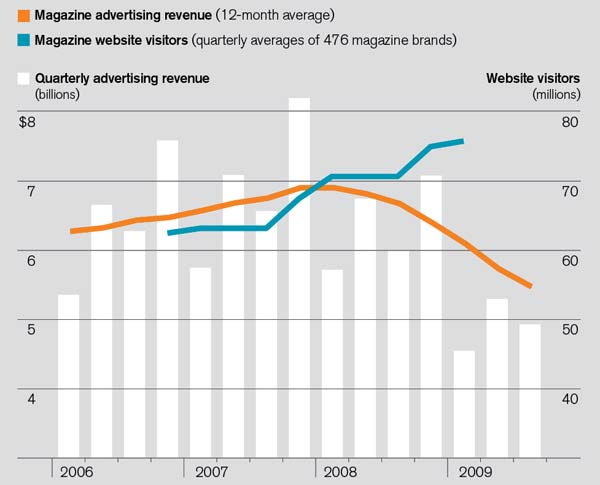Online delivery is putting new technology at the heart of media companies

Online readership is growing, but magazines are pulling in less money


Traditional media supported themselves for decades by acting as brokers between advertisers and audiences. Audiences wanted content, and advertisers wanted access to audiences, so advertisers subsidized the bill for content. Now, cheap computing and network connectivity have created publishing platforms and advertising markets where advertisers and audiences no longer depend on media companies (see “Convergence Is King” and “Mainstream News Taps Into Citizen Journalism”).
The media companies that look most likely to survive are those whose use of new technologies both attracts revenue directly from their audience (by adding value to content) and convinces advertisers that it makes sense to buy ad space from them. It’s a tough challenge: people are used to getting news and entertainment free. But video-streaming websites like Netflix, and digital music stores like iTunes, have demonstrated that customers can be persuaded to pay for content.
Ad revenue will still be vital to many companies, but advertisers are reluctant to pay for online advertising beyond keyword-based systems, which typically cost money only once an ad is clicked. Advertisers were willing to pay for, say, expensive display ads in magazines because a lot of information was available about the magazine’s readers and the effectiveness of such campaigns. By contrast, little is reliably known about online audiences. Technology that allows these audiences to be tracked and measured with precision will be essential to convincing advertisers to pay for online display advertising (see “Bringing Advertisers Back”).
It will be years before the media industry stabilizes. But it is clear that the surviving companies will be those that can give consumers the content they want, when they want it. This will require embracing technologies that work with whatever platform the consumer prefers–be it a Web browser, an Internet-connected television, or a smart phone (see “Media Moves Online”)–and can give advertisers confidence that they are getting value for money.